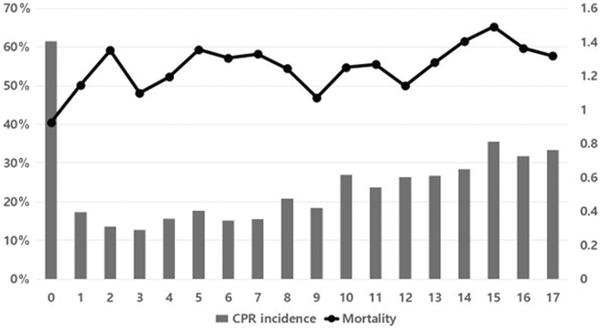A recent study conducted by researchers from Samsung Medical Center revealed that pediatric in-hospital CPR mortality has increased in recent years in Korea, despite the advancement of Korean medicine, and the problem was worse in hospitals that did not have pediatric critical care (PCC).

The study led by Professor Cho Joong-bum of Critical Care Medicine at Samsung Medical Center, analyzed 5,429,471 cases of pediatric patients from 2012 to 2018 using data from the National Health Insurance Service (NHIS).
The analysis showed an inverse relationship as the mortality rate rose during the survey period despite a reduction in CPR incidence. The analysis showed that there were 550 reported cases in 2012, which dropped to 381 in 2018. The research attributed this decrease to the declining fertility rate rather than improved care.
The CPR mortality rate went up from 47.5 percent in 2012 to 54.9 percent in 2018. Even after performing an adjusted analysis to correct for data biases that can affect the death of children such as age and disease, the CPR mortality rate increased by 6.6 percent annually during the survey period.
The researchers said the increase in CPR mortality among pediatric patients is a unique situation in Korea, and structural problems caused by the lack of medical resources such as intensive care units (ICUs) and the shortage of physicians in essential care are all contributing factors.
Comparatively, studies from the U.S. and Spain showed a decrease in the CPR mortality rate from 86 to 61 percent and 74.1 to 59 percent, respectively, over 10 years.
The researchers pointed out that the U.S. operates 257 pediatric ICUs but in Korea, only 11, causing approximately 50 percent of severely ill children in Korea to be hospitalized in adult ICUs due to a lack of pediatricians.
In particular, they noted that hospitals with dedicated PCCs had a lower mortality rate of 45.1 percent compared to 54.8 percent in hospitals without pediatric intensive care units.
This is a significant finding because hospitals tend to save costs by reducing the operation of pediatric ERs and ICUs.
“As a country with already low birth rates, it is even more important to reduce pediatric patient mortality," Professor Cho said. "Bold policy support from the government alongside the structural improvement of facilities and manpower related to children and adolescents in hospitals are needed to improve pediatric patient outcomes."
Related articles
- ‘In children with leukemia, start treatment with fewer side effects’
- FDA grants rare pediatric disease status to GC Pharma’s Sanfilippo syndrome therapy
- These robots play with young patients, carry luggage in hospitals
- ‘Medically advanced Korea lags in pediatric intensive care’
- 'Seoul National University Children's Hospital to expand global outreach of Korea's pediatric care expertise'
- Over 700 pediatricians flock to learn lucrative cosmetics biz

